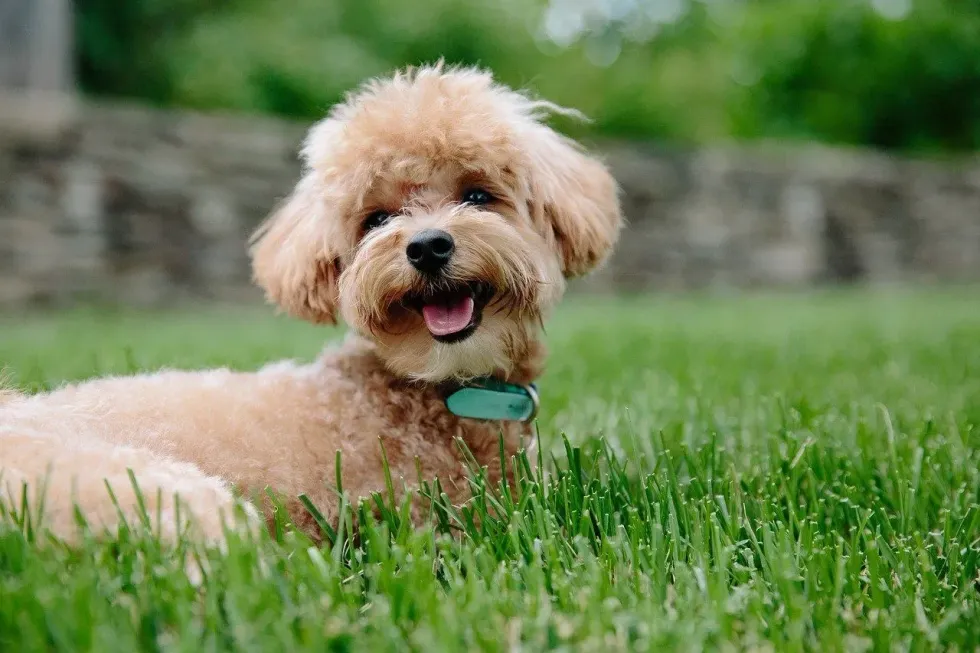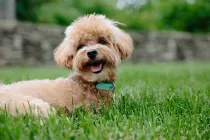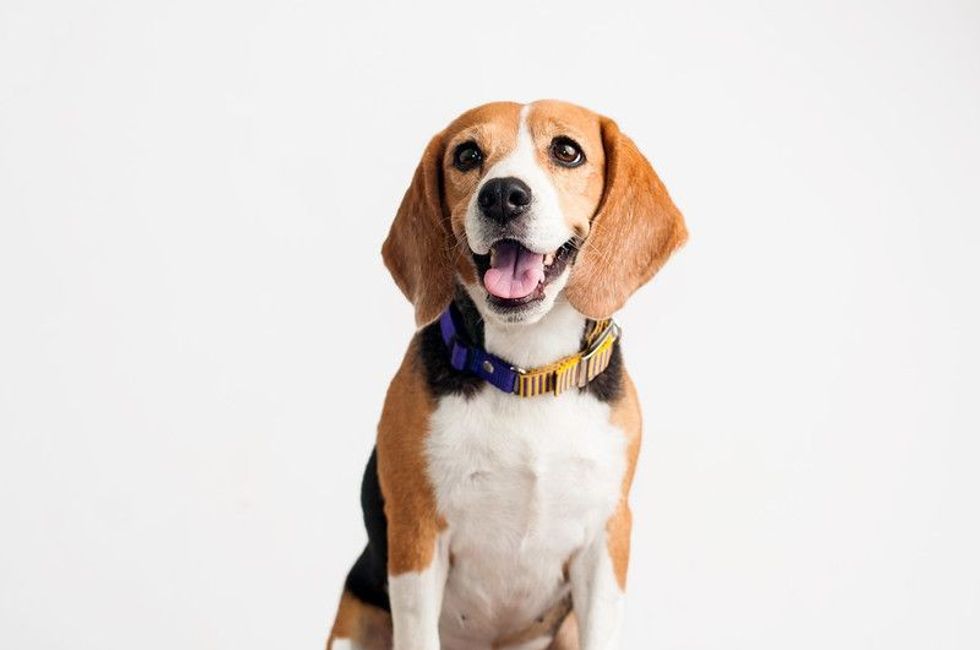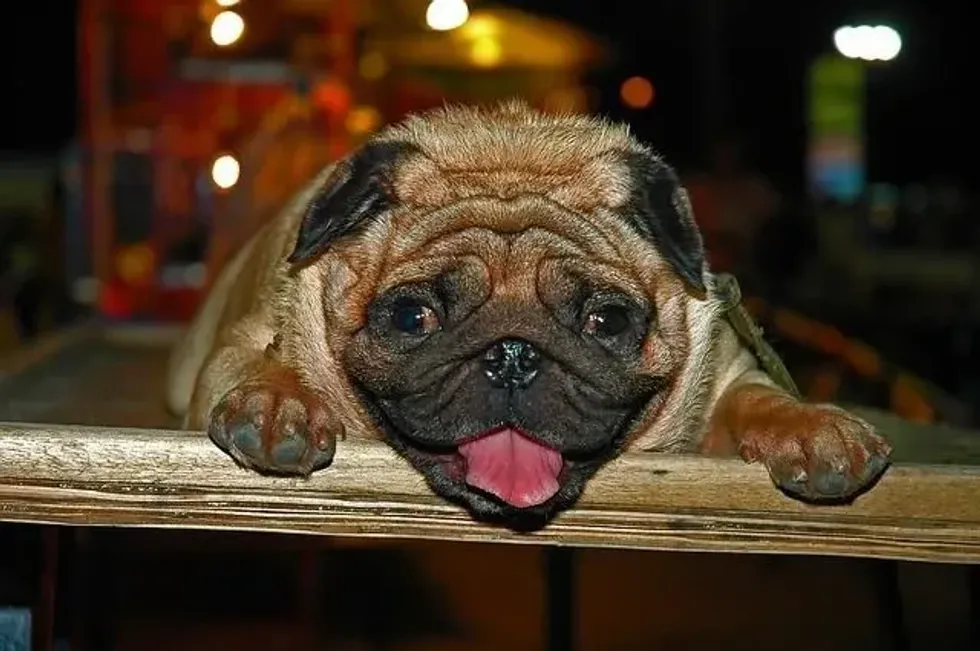Fun Huskydoodle Facts For Kids
Content
- What type of animal is a Huskydoodle?
- What class of animal does a Huskydoodle belong to?
- How many Huskydoodles are there in the world?
- Where does a Huskydoodle live?
- What is a Huskydoodle's habitat?
- Who do Huskydoodles live with?
- How long does a Huskydoodle live?
- How do they reproduce?
- What is their conservation status?
- What do Huskydoodles look like?
- How cute are they?
- How do they communicate?
- How big is a Huskydoodle?
- How fast can a Huskydoodle run?
- How much does a Huskydoodle weigh?
- What are their male and female names of the species?
- What would you call a baby Huskydoodle?
- What do they eat?
- Are they hypoallergenic?
- Would they make a good pet?
- Did you know...
- What colors do Huskydoodles come in?
- Are Huskydoodles good around other dogs?
The Huskydoodle is a mix between the Siberian Husky and the Standard Poodle. It is a friendly, loyal and sociable dog that is slowly gaining popularity due to its unique look and playful nature. They are great with children and also a delight for people with allergies towards dogs as they are hypoallergenic in nature.
Huskydoodles are divided into three groups: the Mini Huskydoodle, the Toy Huskypoo, and the Teacup Huskydoodle. These are all examples of cross-breeding Huskies with Poodles, and a bundle of cuteness is the result!
If you are looking for a best friend to take on walks and jogs with you, then these hybrid dogs are the best as they, much like their super active Husky parent, enjoy running around, acting goofy, and showing their loving and friendly nature towards their owners!
For more relatable content, check out these German Pinscher facts and Afghan Hound facts for kids.
Huskydoodle Interesting Facts
What type of animal is a Huskydoodle?
Huskydoodles, are a breed of hybrid dogs. They are a designer dog breed, resulting from cross-breeding the purebred Standard Poodle with a purebred Siberian Husky.
This medium-large dog is highly intelligent. Poodle-Husky mixes have an active lifestyle and are full of high energy, making them a challenging pet for first-time dog owners. The typical Poodle-Husky mix temperament is a mix match that they inherit from their parent breeds; they can either be easy-going like their Siberian Husky parent or prideful like their Poodle parent!
What class of animal does a Huskydoodle belong to?
Huskydoodles, much like all other species of dogs belong to the mammal class of animals. Mammals are vertebrates that have special mammary glands among females to nourish their young pups with milk.
Mammals are distinguished by other unique features like the presence of fur or hair, three ear bones, a neocortex (region of the brain), a lower jaw that is hinged to the skull directly, and a diaphragm that separates the lungs and the heart from the abdominal cavity.
How many Huskydoodles are there in the world?
These Poodle-Husky mix dogs can be found all over the world at breeders and pet stores, and since there is no specific danger to either the Siberian Husky parent or the Poodle parent, these designer dogs can be continued to be bred. As long as Huskies and Poodles continue to exist, these dogs will too.
These designer dogs (bred from Siberian Huskies and Poodles) are relatively new in nature to other mixed dog breeds making our knowledge of them limited, but they are, however, excellent pets, due to which their demand is high!
Where does a Huskydoodle live?
Huskydoodles live in households as pets. They can be found all around the world much like their parent breeds due to their amazing personality that allows them to thrive as great pets!
Poodles were bred in Germany originally as hunting dogs. They were great at hunting in the water as they would flush out and retrieve waterfowl like ducks.
Poodles today haven't changed much from the original Poodles and they still have the same size and fur coat. The much-renowned Poodle cut was designed to help them move in the water efficiently and the longer areas of their hair aimed to provide protection to parts of the dog. Poodles are truly excellent swimmers.
The Siberian Husky is a goofy, fun-loving dog breed. They are still used as working dogs in their native Siberian Tundra and the Alaskan wilds.
The Siberian Husky dog breed can survive in extreme cold as it has a double coat to withstand harsh storms.
While another dog breed may die in this climate due to the cold, with its thick double coat, the Siberian Husky will thrive and has continued to do so! Siberian Huskies are known to dig burrows in the ground as a shelter if they are left outside for long periods of time.
What is a Huskydoodle's habitat?
Huskydoodles can adapt to a variety of habitats due to their mixed breed design. They usually take after their Husky parent and have a thick coat that requires regular brushing due to their high shedding potential. If their Poodle genetics take over, they will have a curly, non-shedding coat of fur that requires a low amount of brushing.
Due to this coat of fur, they can live in habitats that are cold as well as hot, and hence, they are found all over the world in various weather conditions. However, they adapt better to cold climate regions than very hot ones.
Who do Huskydoodles live with?
Huskydoodles love to be around their owners and can be great family pets as they are great around kids and other members of the family. This mixed-breed dog can form close bonds with people who they have been around since they were puppies!
Huskydoodles are also good mixed-breed dogs to keep around children as they are extremely friendly with kids. Their easy-going and fun-loving temperament makes them great friends.
They are easy to train and with the proper obedience training, you can make sure that these dogs develop great social skills! These Poodle-Husky mix dogs, much like their parents, are affectionate towards strangers, and will often greet guests with a wagging tail and will socialize with them, also being great in public.
This dog breed has very high energy levels and will require lots of mental stimulation. A lot of exercise is required to make sure they don't contract common health issues such as obesity.
How long does a Huskydoodle live?
These mixed breed dogs have a lifespan of 10-14 years. With proper care and control of your dog's diet, Huskydoodles might even live longer than 14 years!
They are, however, prone to health problems that they can inherit from their parent breeds. Patellar luxation, a kneecap condition, is a common health problem that is found in the Siberian Husky, and the Huskydoodle might inherit this from their Siberian Husky parent.
A Huskydoodle can also be prone to diseases like hip dysplasia, a condition where the thigh bone doesn't fit the hip joint.
Discomfort in one or both rear legs can be seen in dogs that suffer from this condition, and at old age, it can take the form of arthritis. If a breeder is selling you a puppy, make sure it has been tested for hip dysplasia.
They are also prone to cataracts, which cause opacity on the lenses of the eyes which results in poor vision, usually occurring in old age. Hypothyroidism is another health issue that can cause problems for your Huskydoodle.
In this condition, there is a deficiency of hormones that are produced by the thyroid gland and this can cause infertility.
Apparent signs of this condition are obesity, irregular heat cycles, and mental dullness, with a dog's fur becoming coarse as it might fall out and its skin becomes tough and dark. It can be treated with thyroid replacement which in turn is a lifelong treatment.
Deafness is also a common condition in dogs and this can be problematic to both the dog and the owner. Sometimes this can be treated with surgery and medication, but usually, it has no cure.
There are many ways to help your deaf dog though, such as by providing good care for them with aids like vibrating collars.
Skin issues, like unnatural shedding, allergies, and a fading coat color can also be a problem due to the double coat these mixed-breed dogs tend to inherit from their Siberian Husky parent. Make sure you tend to your dog even when they show the slightest symptoms of illness and always consult your vet if you are worried.
How do they reproduce?
A Huskydoodle reaches adolescence when they are between six and seven months old and they reach sexual maturity when they are 10 months old. Since they are one of the larger dog breeds, in some cases, their sexual maturity can be delayed up to two years of age.
Huskydoodle females have a gestation period of 63 days after mating. Pregnancy in Huskydoodles is possible when females reach their first estrus cycle. But a responsible breeder will make sure that breeding only happens during their second cycle.
What is their conservation status?
Currently, the IUCN Red List has not listed the Huskydoodle mix breed as a population that is of any concern.
This hybrid, high energy, family-loving dog breed will continue to exist for a long time as long as their parent breeds, the Poodle and the Siberian Husky, can be found all over the world in a good and healthy population.
This Husky-Poodle mix is in popular demand all over the world and with breeders breeding them at a high rate, their population will keep increasing and they hopefully won't be extinct or close to extinction any time soon.
Huskydoodle Fun Facts
What do Huskydoodles look like?
The Huskydoodle, or the Siberpoo, is a breed of hybrid dogs that are unique looking. They carry the colors of the Siberian Husky parent and the curly coat of fur from their Poodle parent. A typical Husky Poodle mix appearance is based on which of the parent's genes is the dominant one.
In general, they have the body of the Siberian Husky and the coat of a Poodle. Their build is much more like that of the Siberian Husky as they are muscular in nature and come in colors like black, gray, and white.
They have blue eyes or can have multi-colored eyes, as inherited from the Siberian Husky.
They have floppy ears and a black nose. The Huskydoodle has a lower amount of shedding compared to the Siberian Husky due to the influence of the genes of Poodles, who shed less comparatively.
*Please note that this is an image of a Siberian Husky, one of the parent breeds of the Huskydoodle. If you have an image of a Huskydoodle please let us know at hello@kidadl.com.
How cute are they?
Huskydoodles are cute to the core! These dogs are full of energy and love to run around and play around with their owners.
They are always looking for attention and will do all sorts of cute antics to get attention from their owners. Huskydoodle puppies are even cuter than an adult Huskydoodle and will make you stare at them in awe!
How do they communicate?
The Huskydoodle's communication is through visual and vocal methods. Visual communication includes licking, sniffing, positioning its tail and ears, gazing at each other, and through facial expressions. Auditory or vocal communication includes barking, growling, whining, whimpering, panting, and sighing. They also communicate through scents and pheromones.
How big is a Huskydoodle?
Huskydoodles are medium-big-sized dogs and can grow from 13-25 in (33-63.5 cm) in size! Different variations of the breed have different sizes too, with 13 in (33 cm) being the minimum size of a Toy Huskypoo!
How fast can a Huskydoodle run?
Unfortunately, there is no data on how fast these dogs can run. With proper training, exercise, and a balanced diet, it is assumed that they can be healthy enough as a mix-breed to reach at least half of the 30 mph (48.3 kph) speed that both their parent breeds can reach when running!
How much does a Huskydoodle weigh?
A Huskydoodle (full-grown) has an average weight of 40-60 lb (18.1-27.2 kg), and if not taken proper care of with a controlled diet, they might suffer from obesity.
What are their male and female names of the species?
The Huskydoodle shares the same names as all other dog species do with males and females. Males are called 'dogs' and females are called a 'bitch'.
What would you call a baby Huskydoodle?
A baby Huskydoodle is called a puppy. A Husky-Poodle mix puppy will be an expressive dog and taking care of them might not be easy for anyone who is a novice.
Huskydoodle puppies are born in a litter of between four and six other Huskydoodle puppies, and they usually have the body, fur, and blue eyes of the Husky with the face and coat of the Poodle.
These puppies are full of energy and are loving towards their family.
They can, however, be moody, as one moment they are playing and the next they will be flashing their teeth!
In order to get them to adapt to the house they live in, it is necessary to start training these hybrid puppies at an early stage and control their diet from a young age in order to avoid any future health issues.
What do they eat?
Huskydoodles should be fed high-quality dog food in a controlled diet in order to keep their health and fur coats intact! Food can be prepared at home or bought from supermarkets.
Are they hypoallergenic?
Yes. The Huskydoodle is hypoallergenic in nature and it has a double coat that needs regular brushing and grooming.
If you are one of those lucky few whose puppy takes after the Poodle parent, then your Huskydoodle shed mess will be less! The upside for any Huskydoodle owner is that the fur of these hybrid dogs is hypoallergenic and odorless in nature.
Would they make a good pet?
A Huskydoodle puppy will cost you around $800-$1500 as a starting price from a reputable breeder. Huskydoodles are excellent pets due to their friendly behavior and playful temperament.
They are adaptive and love to be the center of attention! These Poodle-Husky mixes are great to keep at home as they have a low tendency to bark or growl, but if you are looking for a guard dog, then this dog is not for you!
They are goofy in nature like their Husky parents and might shed from the low to medium range, making grooming a necessity. Brushing their teeth once a month is necessary to avoid poor hygiene too.
Huskydoodles are not apartment-friendly and need a house that is big with a backyard for them to run around and get their daily dose of exercise. This will allow them to burn the excess amount of energy they have in them. With proper training and a controlled temperament, they can be good around other dogs or pets as well!
Getting a Huskydoodle comes with its pros and cons. Some of the pros are their hypoallergenic coat of fur which is good for people with allergies to dogs, their ability to form bonds with family members, especially children, and their intelligence.
This intelligence is another pro that adds to their playfulness!
Some cons of keeping a Huskydoodle are that they are very demanding and high maintenance due to their occasional moody behavior and shedding habits.
They can also be extremely tough to train and they demand a lot of mental stimulation and frequent exercise. Since they are loving and friendly dogs, they can be extremely clingy and might suffer from separation anxiety if they are left alone for a long period of time.
Here are some tips for you to get the best out of training your Huskydoodle! Firstly, make sure you lead from the front and let them know that you are the dominant one.
Teach your puppy to be friendly towards strangers, children, and other pets and praise them when they do so! Finally, reward your dog with treats to show praise for listening to you and when they perform tricks.
These dogs are intelligent and training them can be a breeze most of the time, but since they are moody and stubborn, they will not respond to any kind of training on some days!
So don't lose hope and get agitated, as being patient with them will only lead to great things and your dogs will hopefully soon adapt to training flawlessly and become well mannered and not destructive.
Did you know...
Huskydoodles are also known by several names, such as the Siberpoo, Huskypoo, Poosky, and the Siberian Poodle.
If you are thinking of getting a Husky Poodle mix dog, you may want to know that training them might become a hassle as they can be stubborn like their parents!
Huskydoodles are among the most active dog breeds and they need at least 60 minutes of exercise per day.
These dogs can be physically and emotionally demanding as they are clingy and will display destructive behavior when left alone for a long time. They love spending time with their dog owners!
Whilst these dogs are not particularly susceptible to many health problems, the most common illness these dogs can contract is patellar luxation, a kneecap condition which it gets from its Husky parent.
Grooming Huskydoodles needs to be done every six to eight weeks due to their long curly coat of fur.
What colors do Huskydoodles come in?
Huskydoodles mostly inherit the color of their Husky parent which is black, gray, and white. However, in some rare cases, they take on the color of the Poodle and will be brown, red, or even apricot in color. Sometimes these mix-breed dogs will have a combination of colors of both their parents.
Are Huskydoodles good around other dogs?
Yes, they have a pack mentality like wolves and are good around other dogs. Interestingly, they owe this much-loved trait to their parents who are both great around other dogs. A Huskydoodle adult will get along with other dogs great and will be playful around them. They might even help in training if you get more puppies!
Here at Kidadl, we have carefully created lots of interesting family-friendly animal facts for everyone to discover! Learn more about some other mammals from our Great Dane facts and Pyrenean Shepherd facts for kids pages.
You can even occupy yourself at home by coloring in one of our free printable Huskydoodle coloring pages.
*Please note that the main image is of a Poodle, one of the parent breeds of the Huskydoodle. If you have an image of a Huskydoodle please let us know at hello@kidadl.com.
all over the world
Get directionsWe Want Your Photos!
See All
Bachelor of Arts specializing in Journalism and Mass Communication, Postgraduate Diploma in Sports Management

Moumita DuttaBachelor of Arts specializing in Journalism and Mass Communication, Postgraduate Diploma in Sports Management
A content writer and editor with a passion for sports, Moumita has honed her skills in producing compelling match reports and stories about sporting heroes. She holds a degree in Journalism and Mass Communication from the Indian Institute of Social Welfare and Business Management, Calcutta University, alongside a postgraduate diploma in Sports Management.
Disclaimer
1) Kidadl is independent and to make our service free to you the reader we are supported by advertising. We hope you love our recommendations for products and services! What we suggest is selected independently by the Kidadl team. If you purchase using the Buy Now button we may earn a small commission. This does not influence our choices. Prices are correct and items are available at the time the article was published but we cannot guarantee that on the time of reading. Please note that Kidadl is a participant in the Amazon Services LLC Associates Program, an affiliate advertising program designed to provide a means for sites to earn advertising fees by advertising and linking to Amazon. We also link to other websites, but are not responsible for their content.
2) At Kidadl, we strive to recommend the very best activities and events. We will always aim to give you accurate information at the date of publication - however, information does change, so it’s important you do your own research, double-check and make the decision that is right for your family. We recognise that not all activities and ideas are appropriate for all children and families or in all circumstances. Our recommended activities are based on age but these are a guide. We recommend that these ideas are used as inspiration, that ideas are undertaken with appropriate adult supervision, and that each adult uses their own discretion and knowledge of their children to consider the safety and suitability. Kidadl cannot accept liability for the execution of these ideas, and parental supervision is advised at all times, as safety is paramount. Anyone using the information provided by Kidadl does so at their own risk and we can not accept liability if things go wrong.
3) Because we are an educational resource, we have quotes and facts about a range of historical and modern figures. We do not endorse the actions of or rhetoric of all the people included in these collections, but we think they are important for growing minds to learn about under the guidance of parents or guardians.







